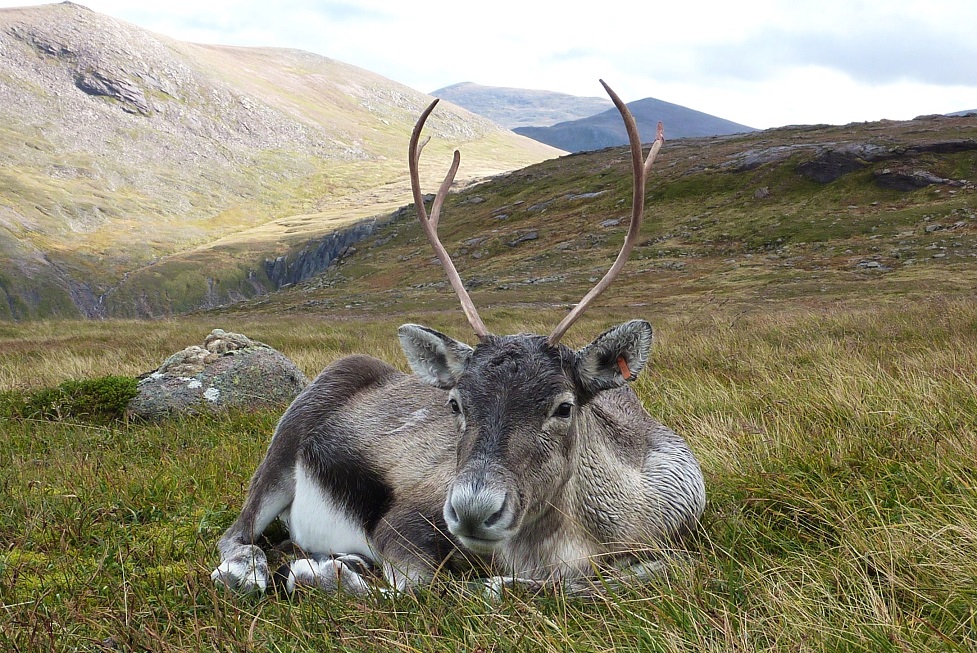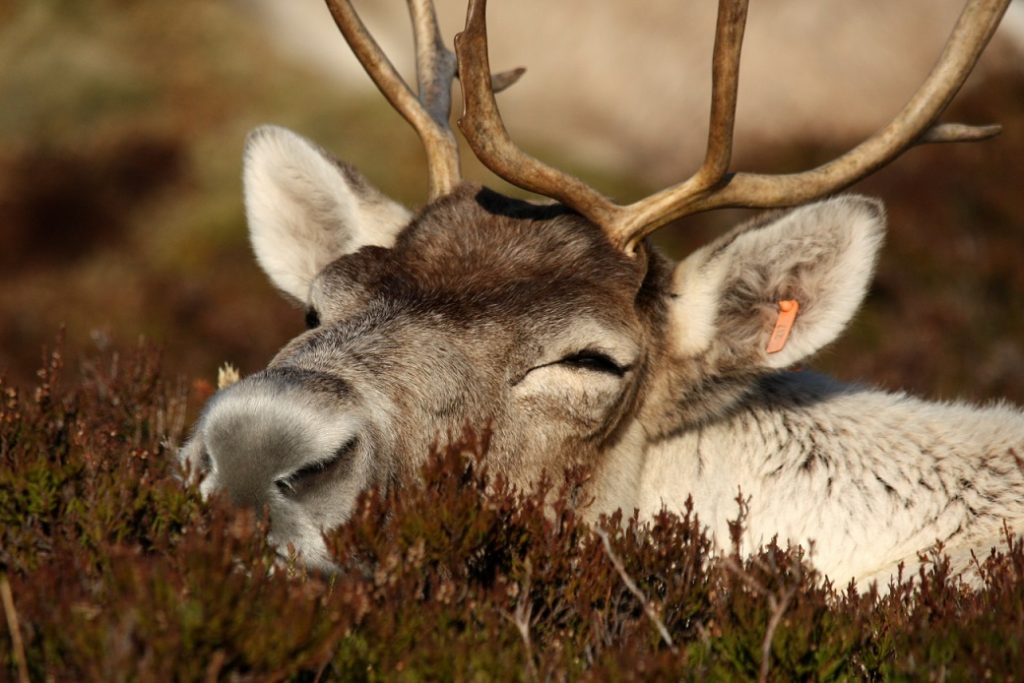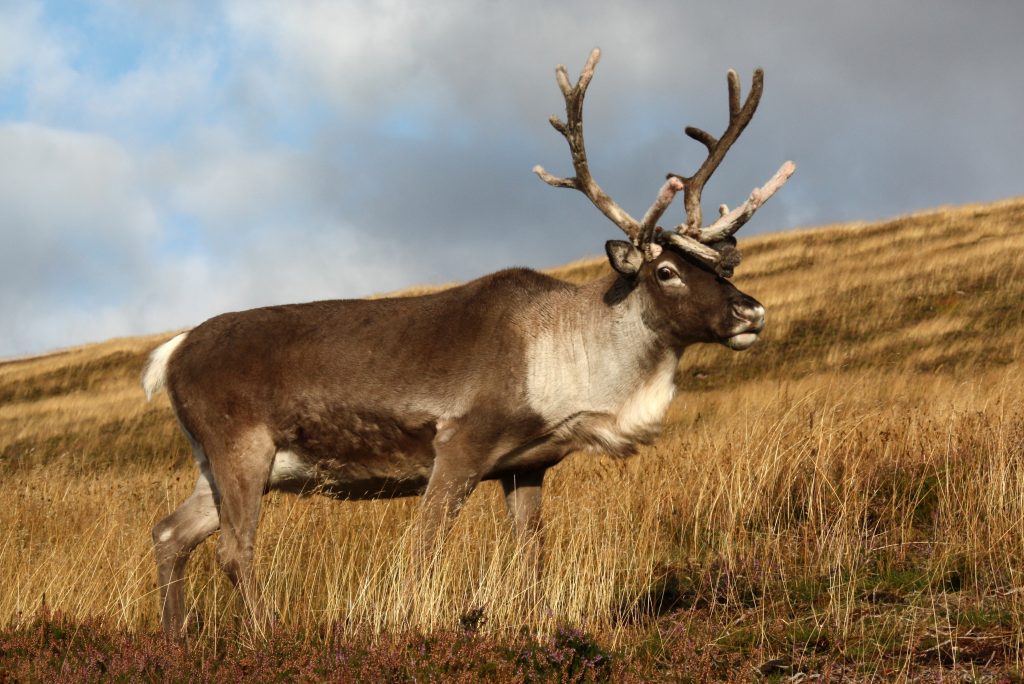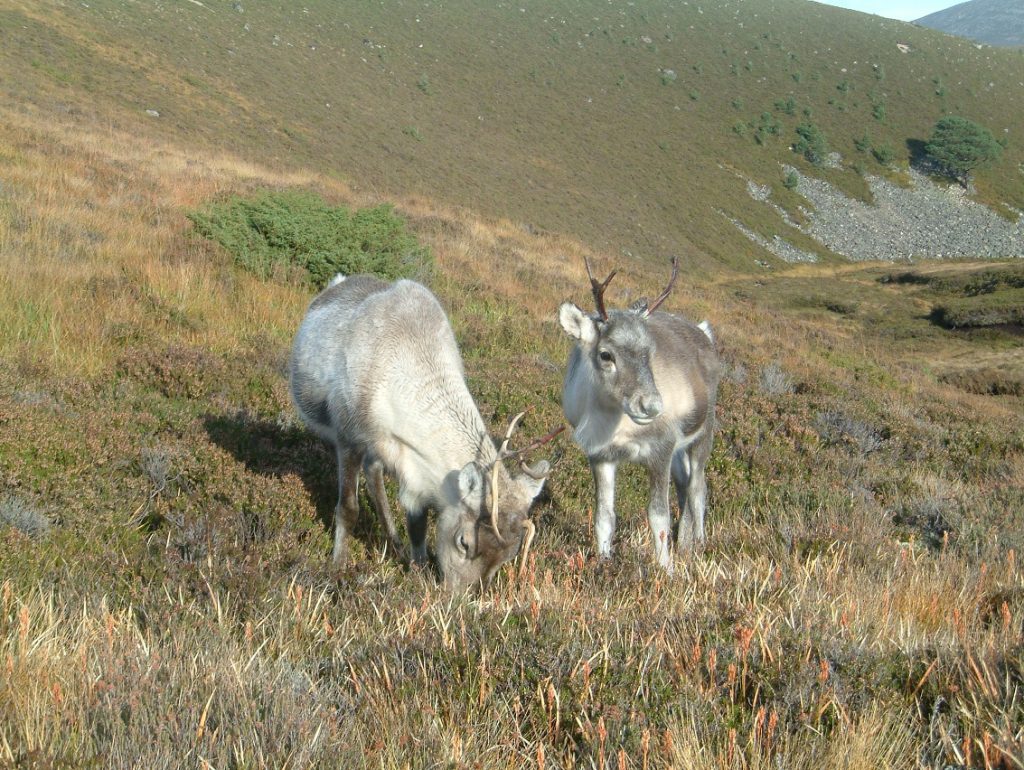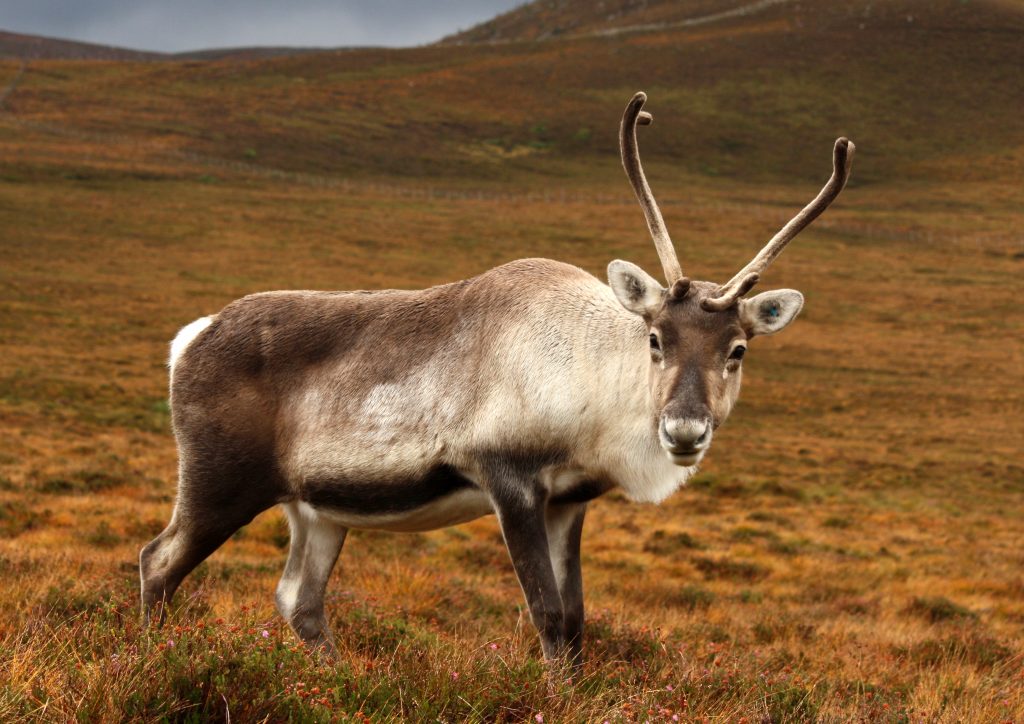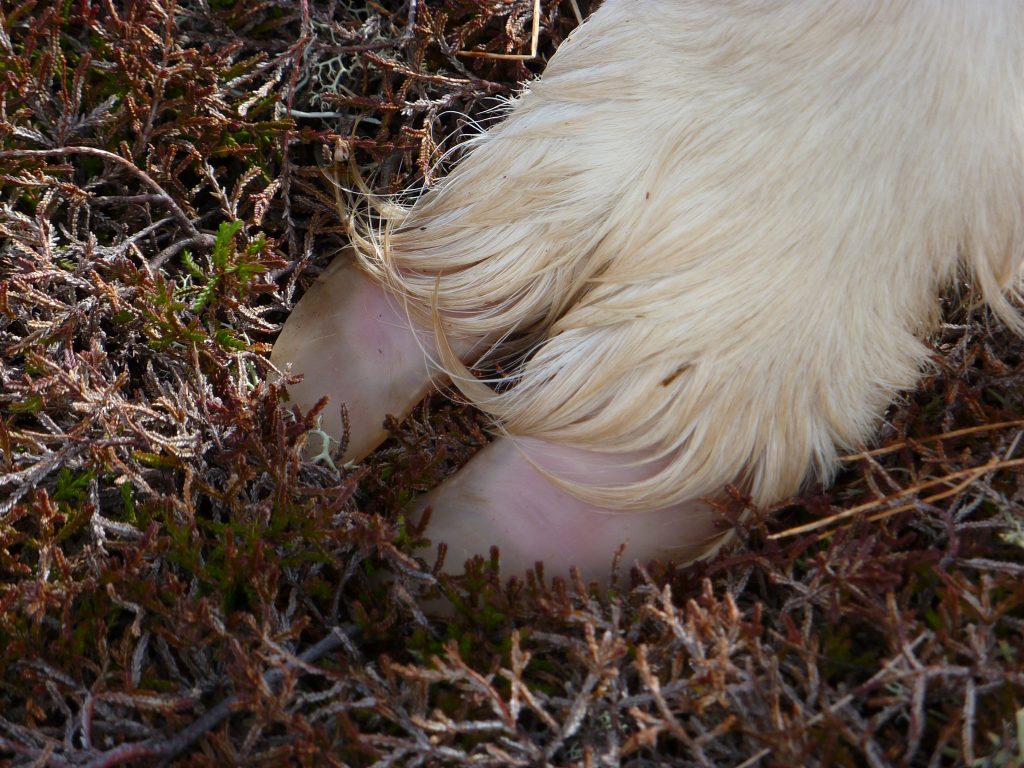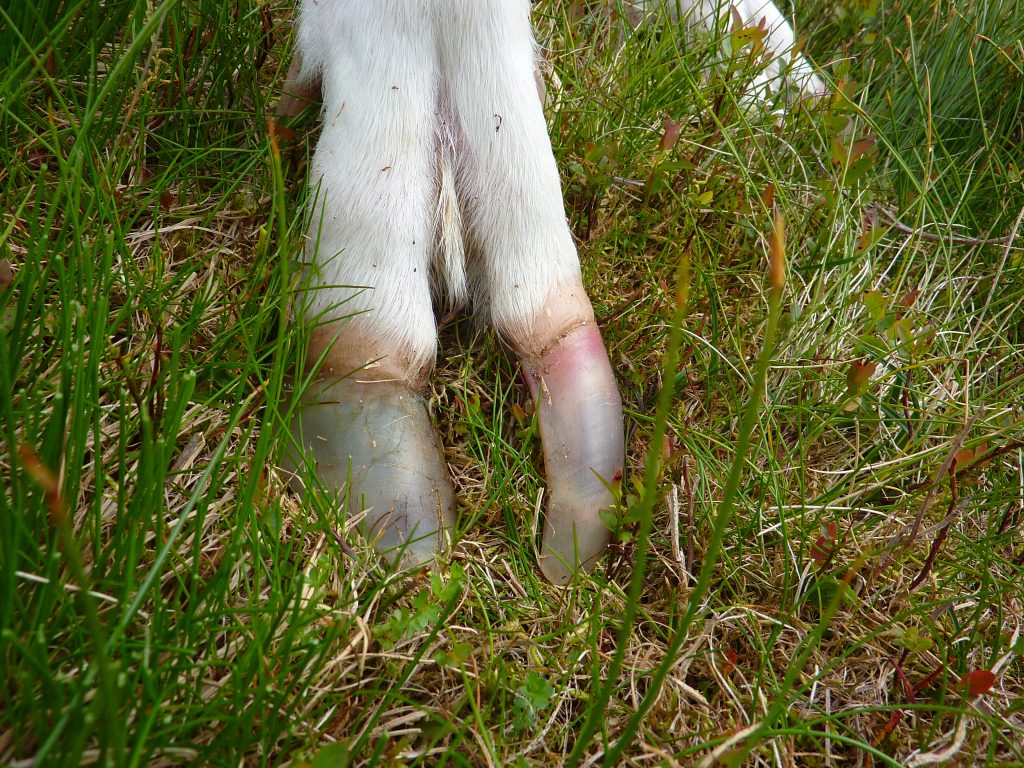Reindeer live about 12-14 years and anything over 10 years is doing well. The oldest reindeer in our herd is always changing, of course. The oldest reindeer we’ve ever had were two females called Trout and Tuna (guess the theme 😉) who got to 18, but they were beaten to the title by Lilac who reached 19 years old and then passed away the summer after. The oldest male we’ve ever had in our herd was Bagheera (17 years and 7 months), but Elvis – who we only lost last year – was extremely close to his record. These ages are exceptional though and we tend to find the average age for female reindeer is around 12-14 years old and males about 11-12 years old.


At the moment in our herd we have two males both turning 15 in May, Caesar and Parfa. Our oldest female is lovely Fern who will be 17 in May. Caesar and Parfa both joined our herd in 2011 when we imported a number of male reindeer from Sweden to address our genetics. Fern, however, was born into our herd on the 5th May 2007. Her mum was also a lovely-natured reindeer called Sequin who, like her daughter, got to an old age so there must be some good genetics there!
Although we didn’t breed from Caesar and Parfa for one reason or another they have both been with our herd for many years as castrated males. They spend most of the year either on the winter free range at our Glenlivet site or during the summer months they join the other old boys on our hill farm where we supplement their feed. They are too old to do Christmas events now but have taken part in some over the years. They have timid natures and like to give us a good run around sometimes. They both look very individual with their big white patchy faces though Parfa is a bit bigger in the body than Caesar. Caesar has never been a very big reindeer, but what he lacks in size he certainly makes up for in character!


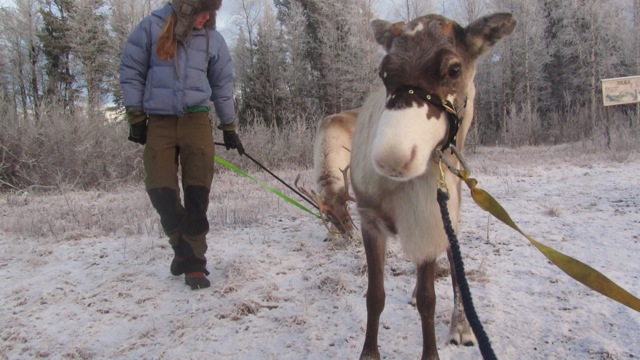

Lovely, lovely Fern! What a cracking reindeer she is. She’s a daughter, mother, aunty, cousin… all of the above. She is Miss Reliable when out free ranging and if you need a nice friendly one to lead when moving the herd then she’s your gal! She is greedy but not pushy and she is beautiful. All in all, she’s a fab reindeer! But is she perfect?!?! Almost… over her younger years Fern took a liking to a part of the mountains which very much wasn’t our leased grazing land. Glenfeshie is pretty far away taking around 5-6 hours of walking over mountain ground or a 30 minute drive around the hill and walking for 1-2 hours from the other direction. Every autumn Fern would commandeer a small group of reindeer and this was where she decided to spend her autumns. We’d all role our eyes when we’d get a report of reindeer in Glenfeshie and could almost predict every time that Fern would be part of the group. She hasn’t done this as much over the past few years so maybe she’s learning slowly but surely. Currently she is part of our free range herd here on Cairngorm for the winter and a great talking point when we take our visitors out to see the reindeer as she looks amazing for her age. Now and again, she gets food stuck in her cheeks and she comes in looking like a hamster so maybe her teeth aren’t quite as good as they used to be. But we can’t fault her condition, she’s not skinny and has grown a beautiful set of antlers in 2023 which she still has in now in March.





So, there you have it. The three oldest reindeer in our herd at the moment – Fern, Caesar and Parfa.
Fiona




